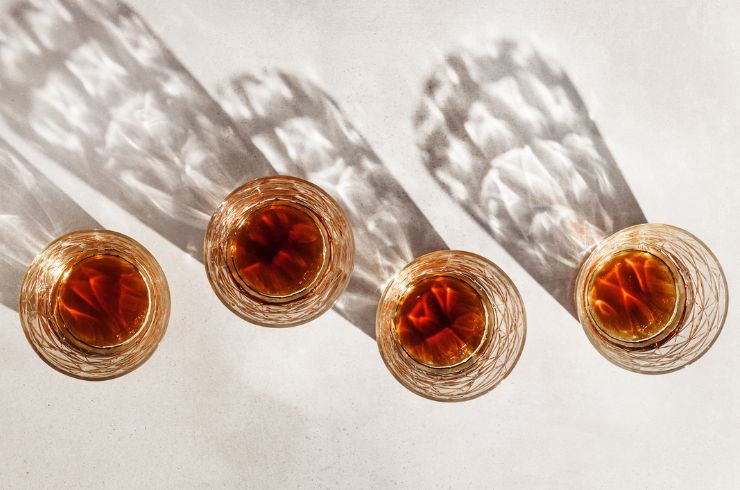There is no right or wrong in the choice, although it is true that those with limited tasting experience will usually prefer young wines with primary fruit flavour. As they gain knowledge and experience over the years, they will gravitate to mature wines with secondary (or mature ‘developed’) characteristics, while a few will venture even further into wines that are positively old.
A second over-arching comment is the development of a wine with a screwcap is usually a little slower than that of wine with a cork and will have none of the variability of cork-finished older wines.
All white and red table wines share two things in common as they age. First, the fruit intensity and purity starts to decline from the first day the wine is bottled, however imperceptibly it may be.
The second change is the increase in complexity, most immediately obvious with white wines that have been fermented in stainless steel and bottled within a few months of vintage. The two standouts are semillon and riesling – the development indicated by a change in colour. When first bottled, the wines will usually have little or no colour – clear quartz with the faintest touch of green.
Over the next five-plus years, the hue will move to a vibrant green-gold or green-yellow, and glow as if there is a tiny halogen light within the glass. So there is a trade-off between declining fruit intensity and purity and increasing complexity, usually for the improvement of the wine.
Red wines move in the opposite direction. The often vivid, crimson-purple of their birth in bottle will slowly lose its crimson hue, with purple following suit a few years further down the track. Ultimately, the colour on the rim of the wine when the glass is tilted will move from red to brick-red and ultimately to a light but warm tawny-brown.
The colour changes in red wine signify the breakdown in the tannins present in the wine that have largely come from the skin of the grapes during fermentation at moderate to high temperatures. This means the mouthfeel will become rounder and softer yet fuller. The red or black fruit flavours will still be in the driving seat, but you will start to see the development of secondary flavours: leather, earth, forest floor and cedar in one stream, and violets, warm spices and vanilla in another stream. Not all will be present though because many factors play a role here, including the variety/varieties from which the wine was made, the techniques used by the winemaker and the age of the wine.
Throughout these complex and differing changes there is one constant: acidity. You will often hear or read phrases such as the acid softening. In chemical terms it doesn't change one iota as the wine ages. It is the effect of the development of secondary flavours that fill the mouth that mask the acidity.
A second over-arching comment is the development of a wine with a screwcap is usually a little slower than that of wine with a cork and will have none of the variability of cork-finished older wines.
All white and red table wines share two things in common as they age. First, the fruit intensity and purity starts to decline from the first day the wine is bottled, however imperceptibly it may be.
The second change is the increase in complexity, most immediately obvious with white wines that have been fermented in stainless steel and bottled within a few months of vintage. The two standouts are semillon and riesling – the development indicated by a change in colour. When first bottled, the wines will usually have little or no colour – clear quartz with the faintest touch of green.
Over the next five-plus years, the hue will move to a vibrant green-gold or green-yellow, and glow as if there is a tiny halogen light within the glass. So there is a trade-off between declining fruit intensity and purity and increasing complexity, usually for the improvement of the wine.
Red wines move in the opposite direction. The often vivid, crimson-purple of their birth in bottle will slowly lose its crimson hue, with purple following suit a few years further down the track. Ultimately, the colour on the rim of the wine when the glass is tilted will move from red to brick-red and ultimately to a light but warm tawny-brown.
The colour changes in red wine signify the breakdown in the tannins present in the wine that have largely come from the skin of the grapes during fermentation at moderate to high temperatures. This means the mouthfeel will become rounder and softer yet fuller. The red or black fruit flavours will still be in the driving seat, but you will start to see the development of secondary flavours: leather, earth, forest floor and cedar in one stream, and violets, warm spices and vanilla in another stream. Not all will be present though because many factors play a role here, including the variety/varieties from which the wine was made, the techniques used by the winemaker and the age of the wine.
Throughout these complex and differing changes there is one constant: acidity. You will often hear or read phrases such as the acid softening. In chemical terms it doesn't change one iota as the wine ages. It is the effect of the development of secondary flavours that fill the mouth that mask the acidity.

There are three key words: balance, line and length.
How does all of this allow you to decide whether a wine will repay cellaring, and how long will it take to reach its peak?
There are three key words: balance, line and length. A wine must have balance between its fruit, acidity, tannin (if red) and oak (if used). They may still be in compartments when the wine is young, but those compartments must be of the right comparative size. Line is less easy to understand if you are newer to tasting, and is of greatest relevance when a wine is near or at maturity. It means there must be a continuous flow of flavour as the wine enters the mouth, then through to the finish. Next, all wines, whether white, red or sparkling, must have length, so the wine is as powerful on the finish and aftertaste as it was when it first entered your mouth.
If, having considered all this, you are still uncertain, remember that history is usually the best guide to the future. Bloodlines are as important for wines as they are for racehorses. You know Penfolds Grange can flourish for up to 50 years (heaven knows how long if it were screwcapped), and that sauvignon blanc is usually best enjoyed within 12 months of release.
Finally, there is no single Eureka moment: there is always a window of opportunity to enjoy good wine.



